PanPac Mill, Milton and McLearys' Logging, Puerua December 2023
We were very fortunate to get a slot for a visit to the PanPac mill at Milton, kindly arranged for us by Neville Hills of Forest Management Ltd. This took place on the morning of 8 December, but as it was at short notice, there was not a big turnout, just about 16 people. That actually suited the presenters for the tour – Peter Mahews, Sawmill Coordinator and Ant Conway, Operaons Manager – as there were fewer of us to herd around the mill.
In the introductory talk, we learned that PanPac is owned by Oji, a Japanese paper company. PanPac has been in Milton for seven years but much longer in NZ: 50+ years in Napier, although that mill is currently not working fully due to damage caused by Cyclone Gabrielle. The Napier mill is four and a half times the size of the Milton one, which seemed huge anyway, and at Milton 900 tonnes of wood a day is cut. The sawdust and bark from the logs fuel the boiler to dry the timber. The result is 12 trucks a day go out with lumber, and seven trucks a day go out with chips. The mill holds about a week’s worth of log supply, as they prefer fresh wood.
PanPac also prefers wood which has been well looked after, and of higher grades such as pruned, partly pruned and A grade. The mill can take a maximum diameter log of 61 cm for pruned, or 55 cm for A grade, and they are constrained to a 4 m length. They cannot handle oversize logs as they will jam the mill, so if any of these arrive they are carted to the port and sold at a loss. At the other extreme, a log with too small a diameter wastes the mill’s time as it takes up the place of a larger log. PanPac is strict on the shape and form of the log, and want people to look after their trees and prune them well.
As the log starts its journey through the mill, it is scanned, generating a 3D image from which the computer figures out the optimum cut. It is then cut into planks, trimmed automatically and sorted into bins, stacked, and put out into the yard in readiness for drying.
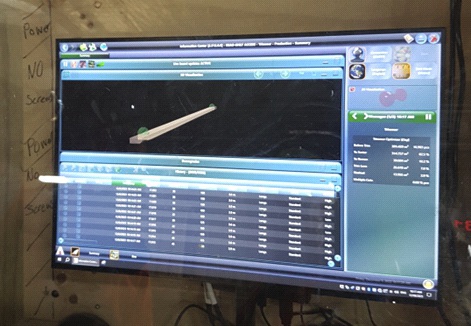
3D representaon of the cut
54% of the log volume is recovered into saleable lumber, and 24% is made into chips which go to the Mataura mill for MDF. Ant Conway noted that the biofuel market is starting to change, with all the boiler conversions recently. The lumber is shipped to various countries around the world – the high grades go to the US and Europe, while the lower grades go to Asia, Thailand and Korea for example. The volume going to China these days has reduced. PanPac deals with just radiata pine, producing appearance-grade timber only, not structural. If a larger mill is built at Milton in the future, it will be possible to process Douglas-fir too.
Photos from the mill:
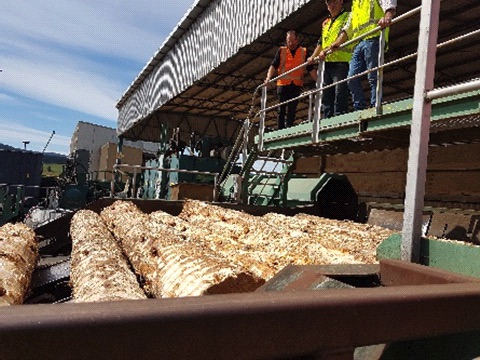

It was incredible that, once a log is loaded into the mill, it takes just five minutes to pass through and end up as timber in the yard. It then goes into the kilns for drying which takes approximately two weeks for larger beams. There is a whole science behind drying timber.

PanPac sharpens their saws on site, and re-tips them when needed. A saw runs for two days before needing to be sharpened. PanPac has its own spring and bore which supply the water to keep the saws cold while they work, and also supply the boiler with the water it needs for the drying/steaming process.
FSC-certified wood is preferred at the mill, but as there is no price premium when PanPac sells the wood, there is thus no premium to pass on to the supplier. However, it increases PanPac’s market share in the timber market.
It was interesng that the timber is stacked for the drying process using fillets of LVL wood to separate the layers. These are reused several times, being very strong and able to withstand the drying/steaming process again and again.
Altogether, a fascinating look around the mill, seeing where our trees end up.
Next, we saw where some of those logs were coming from – Alan and Jo McLeary’s farm at Puerua, south of Balclutha, which SOFFA had last visited in 2019.
We were met there by Neville Hills of Forest Management Ltd who is doing the harvest management for the McLearys, and Baz (Barry) Winders of Winders Logging and his team who are doing the actual logging. Baz started in August logging a 1.4 ha block of pine, and Alan credits Baz’s care and expertise for netting 650 tonnes/ha and $36,000 for that small block. Although they were good trees, Alan highlighted the importance of the logging operator and spoke very highly of Baz. He liked his honesty, the care that was taken with the logging - fences remained in place - and the cleanliness of the logging team who left no rubbish lying around: traits which are well suited to a logging job on a farm.
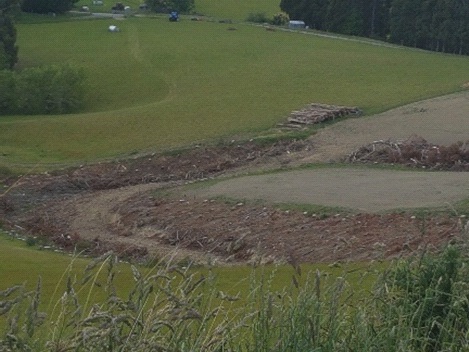
1.4 ha block
After this successful logging, Baz carried on to log about 13 ha of 26-year-old pine on a hill. Alan had thinned this block himself. He mentioned that the log prices were not flash, but as he had the loggers at his farm, available trucks, and the ability to send logs to PanPac rather than the wharf, he decided to log anyway. The decision was probably helped by wife Jo kicking his shins as she wants a new house.
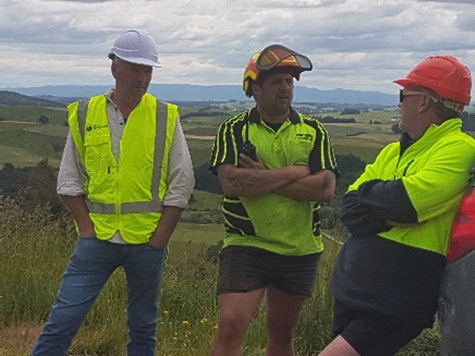
Baz Winders in the centre, Al McLeary on the left, Scott McKenzie right
Alan had put the logging road in a few years ago. The type of road was discussed at a farm forestry field day there in November 2019; Alan did not include any of the recommendations, funnily enough, but there were no problems with the road as its had a few years to bed down. Hendersons were the trucking company – Alan and Jo found them very considerate, they would slow down at the house and stop for chickens crossing the road.
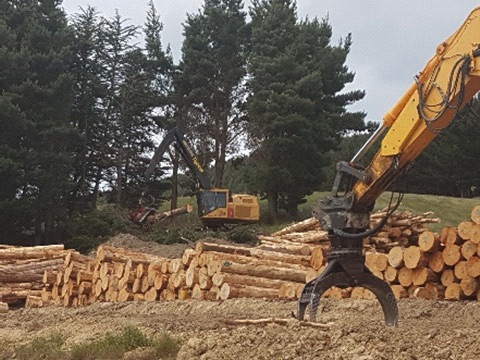
Logging a small area just by the skid site
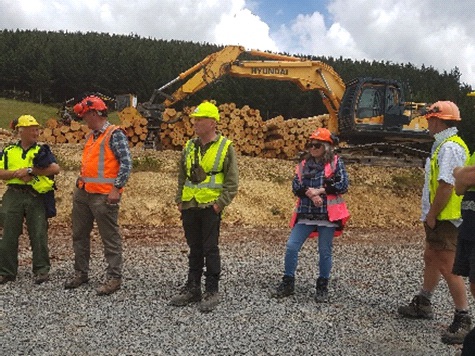
Neville Hills in the centre, Jo McLeary to the right
Apart from the logs to PanPac, the slash is also used, taken to Azwood in Milton for processing into chips which will feed the Danone boilers at Greenfield. This leaves much less mess on site and although there’s no money in it, it is got rid of.
The McLearys recently bought a block in the Milton area to help spread the logging rotation and NZU's. Units will have to be repaid following the current logging, but Alan will replant and earn more credits, getting a cycle going. He also liked the concept of keeping the forestry industry ticking over, at this time when there is less logging happening.
The logging job will finish around the end of January. That seemed some way off but the upside is there is a chance the log prices will go up before then. Windrowing has already started, and Alan plans to spray before replanting next winter.
It was great to be back at the McLearys’ place, and good luck to them for a successful and profitable conclusion to the logging. And fingers crossed that Jo finally gets her new home!
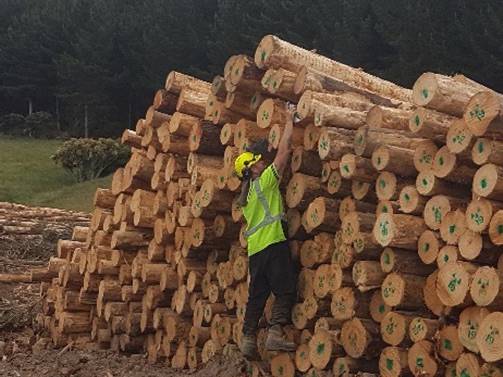
Marking the logs
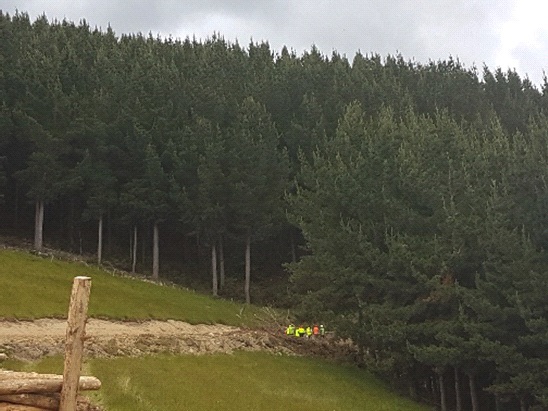
Height of remaining trees put into perspecve by hi-viz- vest-wearers
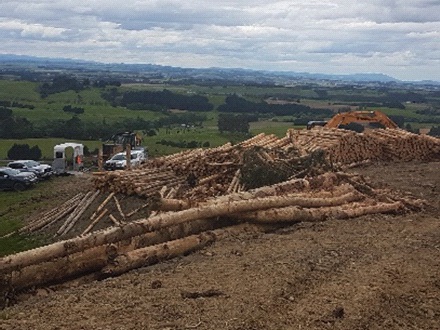
The skid site and a great view beyond

Harvested and windrowed area
